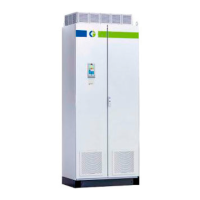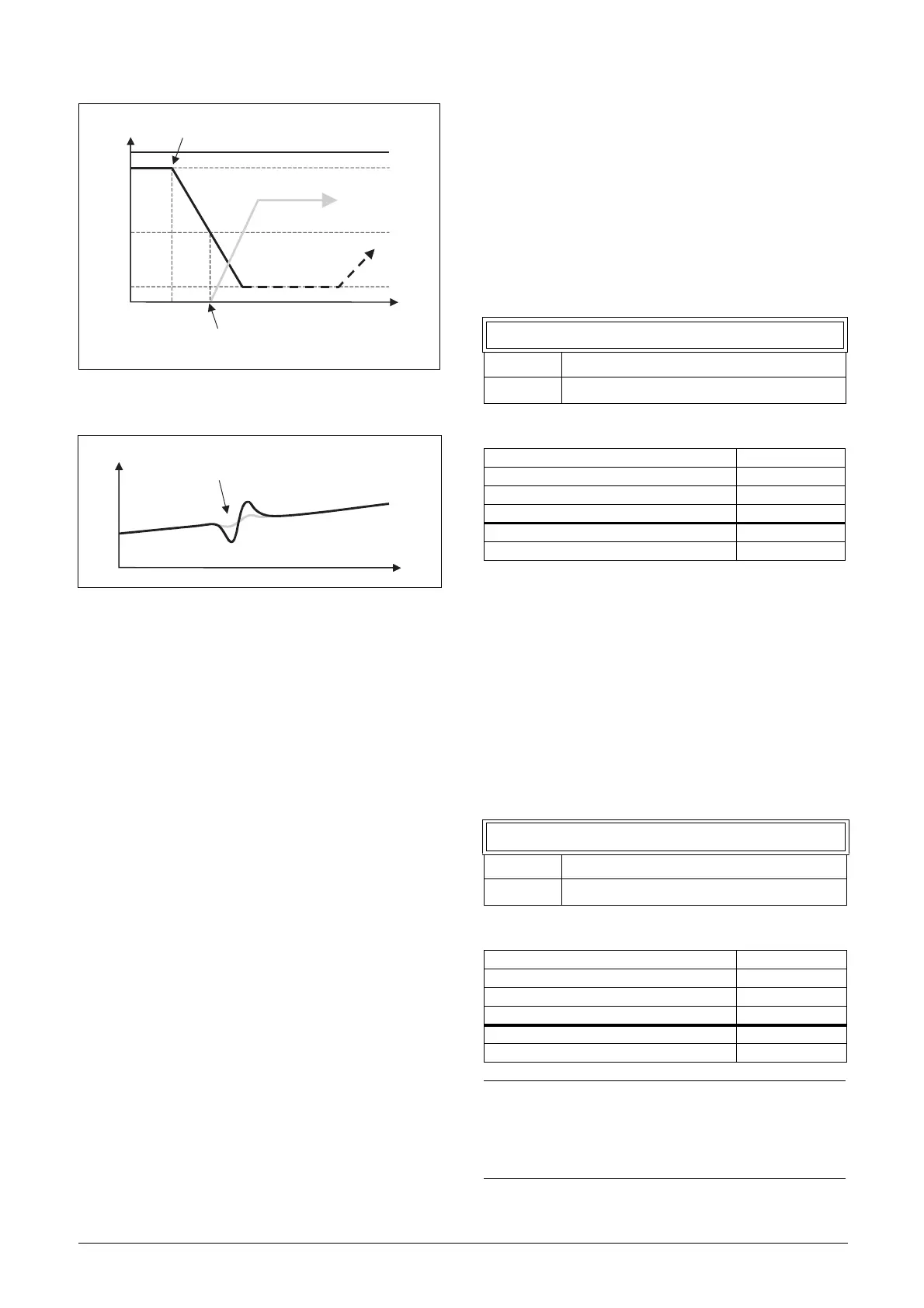152 Functional Description CG Drives & Automation, 01-5326-01r5
Fig. 119 Transition speed start
Fig. 120 Effect of transition speed
Settle Time Stop [39F]
The settle stop allows the process to settle after a pump is
switched off before the pump control continues. If an
additional pump is stopped D.O.L. (Direct On Line) or Y/
,
the flow or pressure can still fluctuate due to the 'rough'
start/stop method. This could cause unnecessary starting
and stopping of additional pumps.
During the Settle stop:
• PID controller is off.
• the speed is kept at a fixed level after stopping a pump
Communication information
Transition Speed Stop [39G]
The transition speed stop is used to minimize a flow/
pressure overshoot when shutting down an additional pump.
The setting depends on the dynamics of both the master
drive and the additional drives.
In general:
• If the additional pump has 'slow' start/stop dynamics,
then a higher transition speed should be used.
• If the additional pump has 'fast' start/stop dynamics,
then a lower transition speed should be used.
Communication information
Speed
Actual
Trans
Min
Switch on
procedure starts
Additional pump
Master pump
Flow/Pressure
Actual start
command of next
pump (RELAY)
Flow/Pressure
Transition speed
decreases overshoot
Time
39F Settle Stop
Default: 0 s
Range: 0–999 s
Modbus Instance no/DeviceNet no: 43175
Profibus slot/index 169/79
EtherCAT and CANopen index (hex) 4c67
Profinet IO index 19559
Fieldbus format Long, 1=1 s
Modbus format EInt
39G TransS Stop
Default: 60%
Range: 0-100% of total min speed to max speed
Modbus Instance no/DeviceNet no: 43176
Profibus slot/index 169/80
EtherCAT and CANopen index (hex) 4c68
Profinet IO index 19560
Fieldbus format Long, 1=1%
Modbus format EInt
NOTE: If set to 0 %, the transition speed when
stopping pumps, is ignored and no speed adaption is
made.
I.e. the slave pump is stopped directly and speed of
the master pump is continued.

